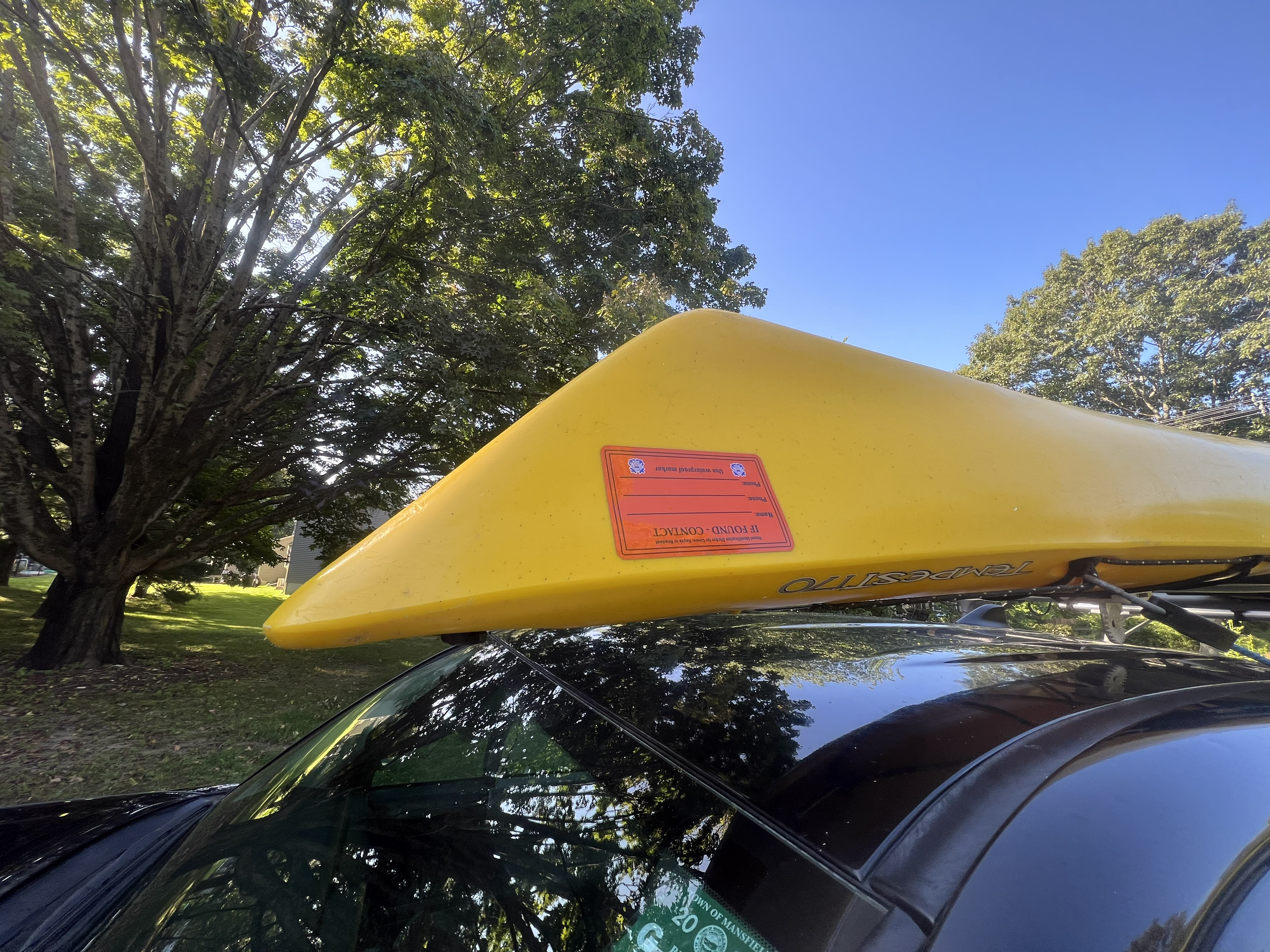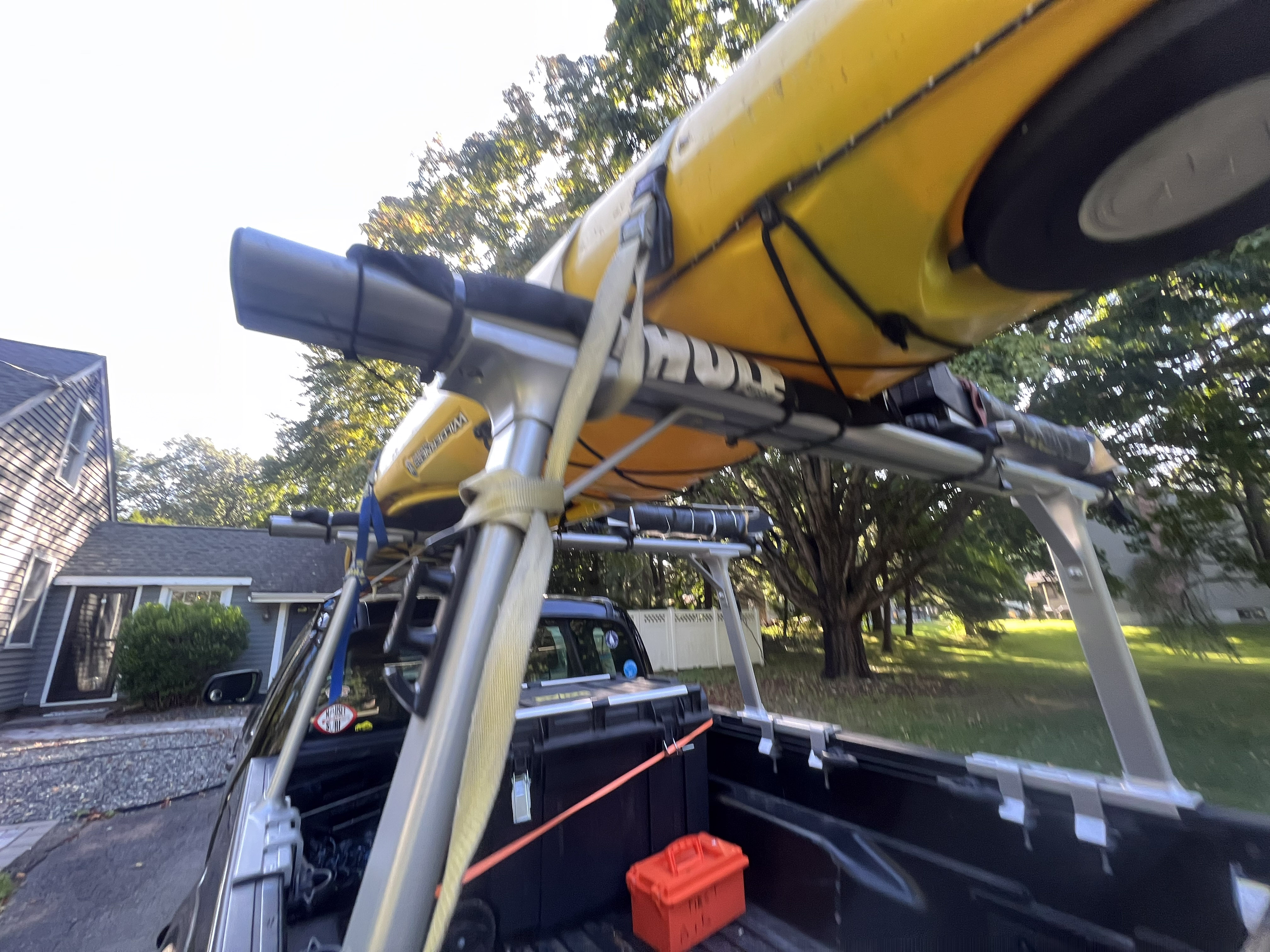There’s a lot to think about when getting a kayak or SUP, and it’s easy to get lost in important details like length, capacity, and price. One thing many kayak and paddleboard buyers fail to consider is how they’re going to haul their craft. Before buying your dream boat or that perfect paddleboard, consider these tips for how to safely transport your kayak or SUP.

Considerations When Purchasing a Kayak or SUP
After decades of guiding kayaking, instructing SUP, and renting kayaks and paddleboards, I’ve used it all, from tow-behind trailers to top-of-the-line racks to foam blocks and straps. I’ve also seen it all, like boats secured by dollar store bungee cords to jerry-rigged racks—yikes! It never fails to surprise me the number of questionably secure kayaks and boards I see riding on top of vehicles moving at 80+ mph.
Just as jaw-dropping as the amount of haphazardly secured boats and boards I’ve seen on the tops of cars is the number of people I’ve met who’ve arrived home with their new boat/board only to realize they can’t get it off their vehicle. And, even if they get the boat/board off their roof, they don’t know how to get it back on.
Before pulling out your credit card or plopping down cash for a new boat/board, ask yourself:
- How am I going to get this home?
- Can I lift this on and off of my vehicle?
- Where will I store my new craft when I’m not using it?
Considerations When Deciding How to Transport a Kayak or SUP
There are a wide variety of roof racks and carriers made for transporting boats and boards. At times, it seems the only limit is your imagination and budget—they vary from the classic “Js” (you know, the racks that seemingly adorn every other Subaru you see in the summer) to hydraulic-assisted racks that lower to waist height and reduce the strength needed to lift a kayak. In fact, I’ve known people to spend more on their rack than their boat/board. After all, a boat/board is a lot less fun if you can’t get it to the water.
Roof capacity: When choosing a rack, one thing to consider is how much weight a vehicle’s roof can support. For example, Subarus like the Ascent, Crosstrek, and Forester all have a roof rail capacity of 700 pounds when the vehicle is parked on a level surface. However, when moving, that load is reduced to 176 pounds. It can be pretty easy to exceed this—you’re pushing nearly 200 pounds with two of the popular kayaks like the Wilderness Pungo 120s (each about 50 pounds) and the weight of two matching Thule Hullavator Pros (about 40 pounds apiece) that carry them.
Physical capabilities: Even if you have a relatively lightweight kayak or SUP, their length makes them relatively unwieldy. The combination of this and the height of many of today’s vehicles—which is only exacerbated by the rack—can make loading a boat/board on a roof rack troublesome at best and out of the question at worst. Before making that big purchase, ask yourself if you’re able to get the boat/board on your vehicle.
Kayak carrier: Just because something is called a kayak carrier, doesn’t mean it can actually carry your kayak. When choosing the system for transporting your kayak or SUP, you’ll need to pick something that matches your vehicle and is capable of carrying your boat or board.

How to Choose a System for Transporting Your Kayak or SUP
There are a ton of great resources for choosing a method to transport your craft. Online, you’ll find a variety of articles dedicated to the subject and these are great for building a foundational understanding of what’s available and what people are using.
While online is an excellent source of information, it’s also a smart strategy to speak to a real person. Rent a boat or go to your local launch and see what other paddlers are using. Have a question? Go ahead and ask! Paddlers love to talk about their systems and share the tips and tricks they’ve developed over the years.
Another option is to visit your local EMS (or paddle shop). The staff there has likely had firsthand experience with a number of racks on the market and has been trained to help you find a rack that fits your vehicle and meets your needs—and they can show you how to properly secure your boat/board.
Ultimately, each system has its pros and cons. The key is to figure out what features you are looking for, what will work best for you, and how much you are looking to spend.

Tying It Down
When in doubt, think of Occam’s razor when transporting a kayak or paddleboard—the simplest solution is preferable to more complex ones. For me, that means using foam blocks and cam straps. For you, it might mean a high-tech, hydraulic rack. Whatever method you use, make sure your boat is secured while you’re transporting it.
Luke Foley
Luke Foley is passionate about discovering and sharing hidden local treasures and has long been a New England adventure enthusiast. After all, there are only a few places where you can skin for fresh tracks in the morning and have a sunset surf session on the same day.
Related Posts
April 2, 2024
10 Tips for Mountain Biking Etiquette During Mud Season
One rough spring could ruin the…




